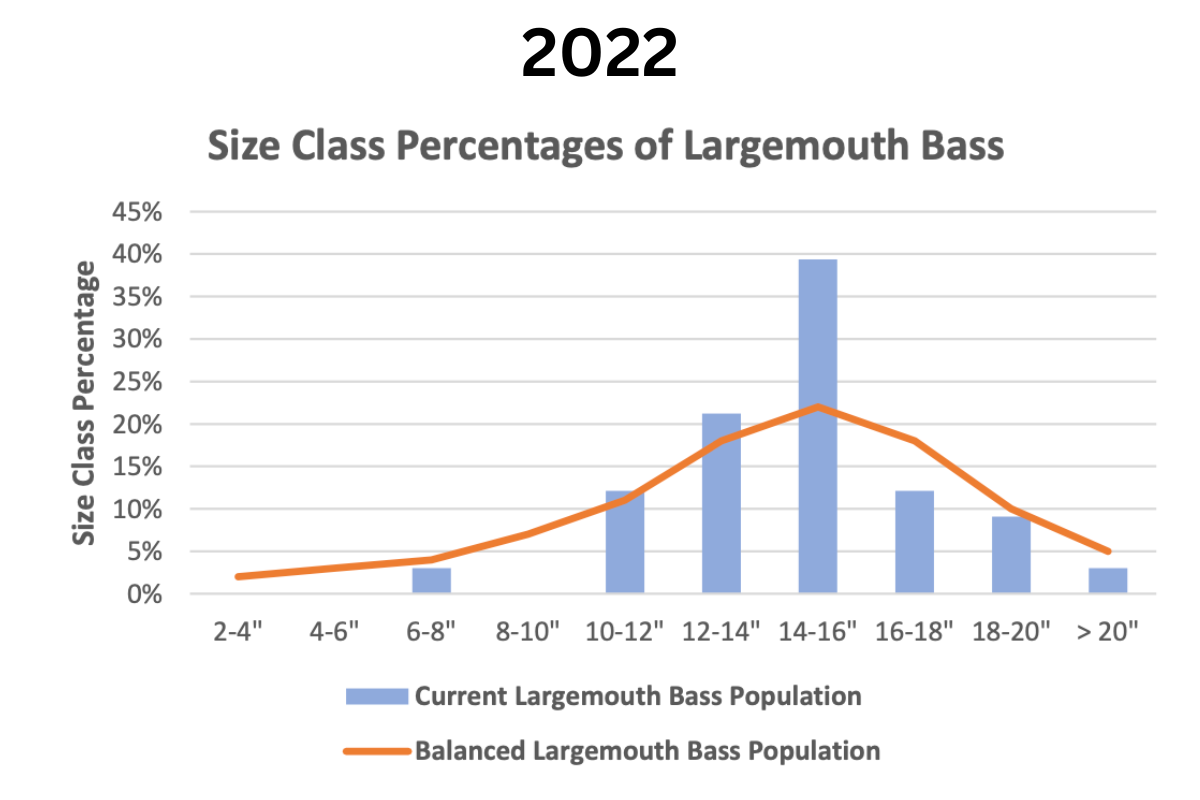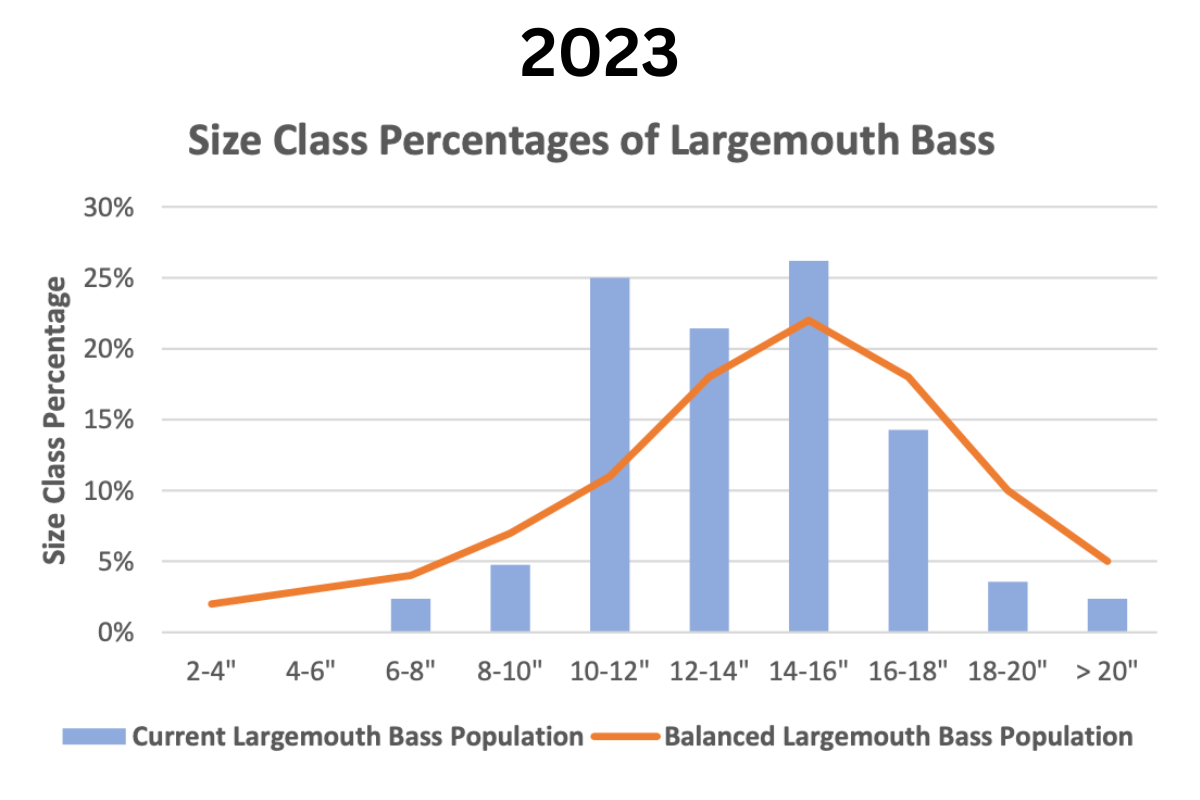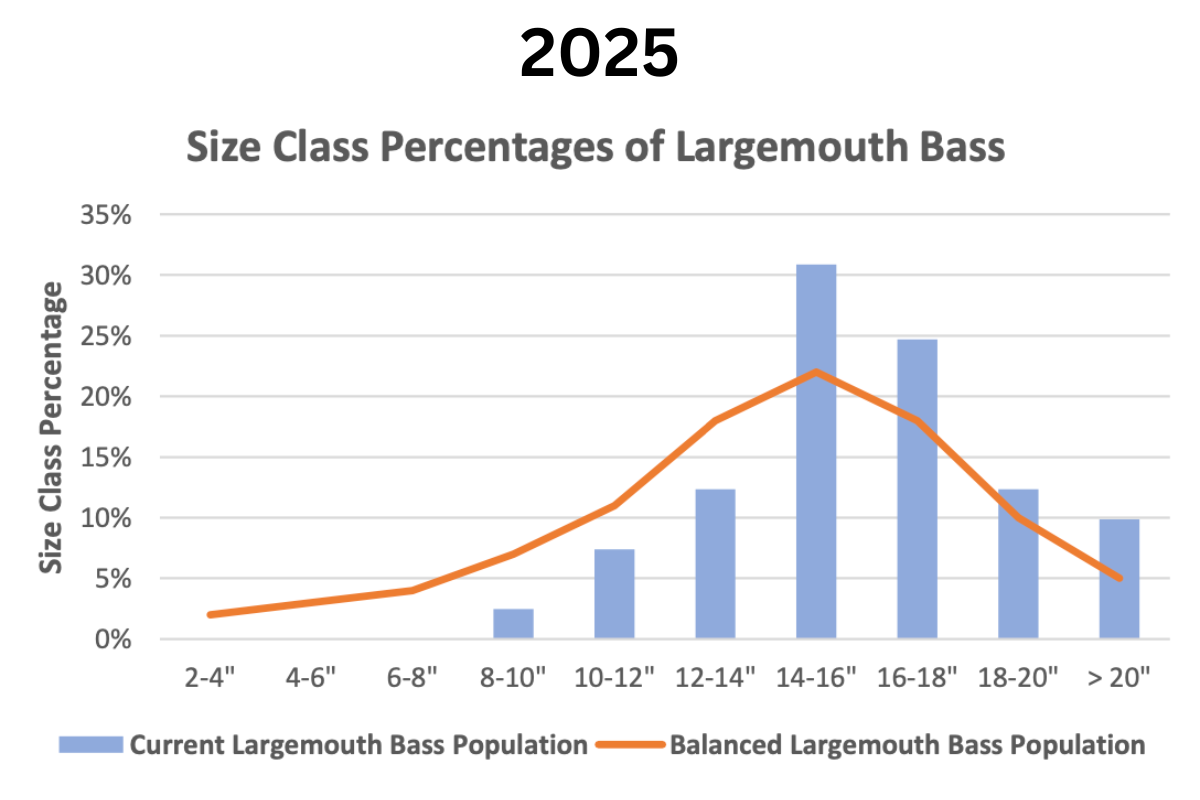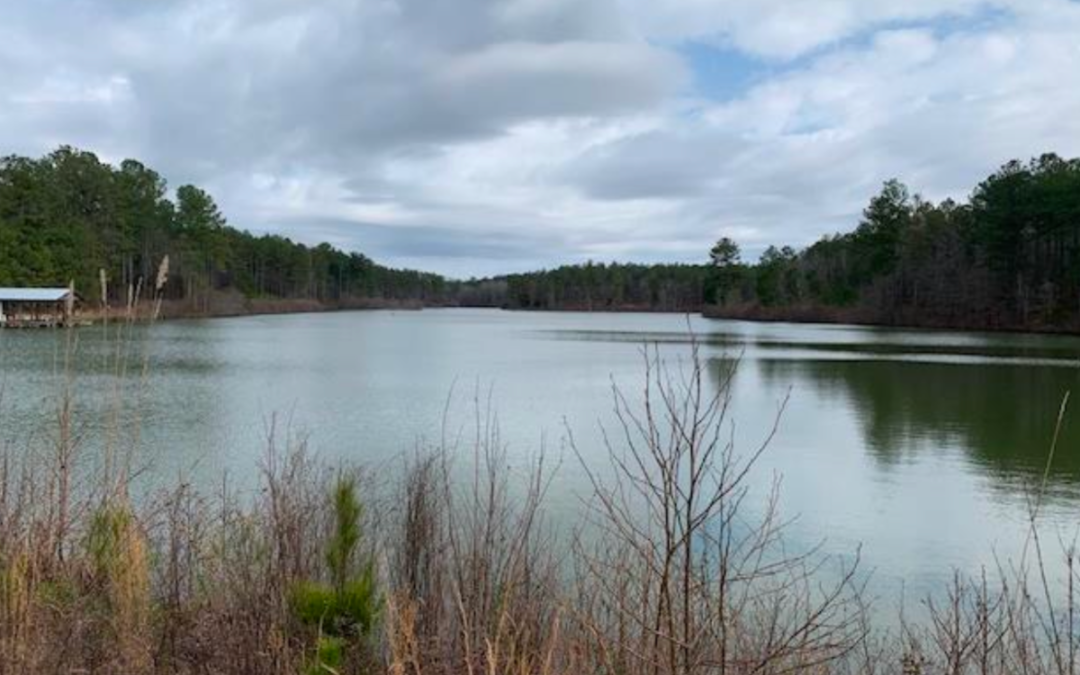Private farm ponds can offer some of the best fishing experiences imaginable, but turning farm ponds into trophy bass fisheries requires strategic management and long-term dedication. When we began managing one particular 25 acre pond in 2022, it was severely overpopulated with undersized and underweight largemouth bass. Through a combination of proven pond management strategies, we have successfully improved the pond’s overall health and restructured the bass population to promote the growth of trophy-sized fish.
In this blog, we’ll walk through the essential steps we took to turn an overpopulated pond into a well-balanced fishery, highlighting the importance of each management practice.
Assessing the Problem: Overpopulation and Poor Growth
One of the most common issues in private farm ponds is an overabundance of small, stunted bass. This occurs when the predator-to-prey ratio is imbalanced, leaving bass competing for limited food resources. As a result, their growth is stunted, and the overall health of the fishery declines. In 2022, when we first assessed this pond, it was clear that intervention was necessary to restore balance and optimize conditions for trophy bass growth.

Improving Water Quality with Lime Applications
Water quality is the foundation of a healthy ecosystem in farm ponds. One of our first steps was adding agricultural lime to the pond. Adding lime to farm ponds helps stabilize pH levels, improve water clarity, and enhance nutrient availability. This, in turn, creates a more productive environment for phytoplankton growth, which forms the base of the aquatic food chain. Without proper water chemistry, even the best fish stocking strategies can fall short.
Fertilization to Promote Phytoplankton Growth
Phytoplankton is the backbone of a thriving fishery. These microscopic plants serve as the primary food source for zooplankton and small aquatic invertebrates, which in turn provide nutrition for forage fish like bluegill and shad. Adding aquatic fertilizer to farm ponds boosts phytoplankton production, increasing the overall carrying capacity of the pond and providing more food for the entire ecosystem.

Enhancing Forage Availability: Crawfish and Shad
A major factor in growing trophy bass is ensuring they have access to high-quality forage. In this pond, we introduced two excellent food sources for largemouth bass: crawfish and shad.
- Crawfish: Crawfish are an ideal forage species because they are high in protein and promote rapid weight gain in bass. By introducing crawfish into farm ponds, we provide bass with a readily available, easy-to-catch food source that supports significant growth.
- Shad: Threadfin shad are another excellent forage option for bass. They reproduce rapidly and provide a consistent food source for intermediate and larger-sized bass. Adding shad to farm ponds can help balance the food web and ensure bass of all sizes have adequate nutrition.
Supporting the Bluegill Population with Fish Feeders
Bluegill are the backbone of a trophy bass pond because they serve as the primary forage fish for largemouth bass. However, in an overpopulated bass pond, bluegill populations can become depleted, leading to a severe lack of food for bass. To combat this, we installed automatic fish feeders to supplement the bluegill diet with high-protein fish food. This additional feeding program allowed the bluegill to grow larger, reproduce more successfully, and sustain a healthy population capable of supporting growing bass.

Monitoring Progress and Adjusting Strategies
Pond management is not a one-time fix—it requires ongoing assessment and adjustments. Since 2022, we have closely monitored fish population dynamics through electrofishing surveys and angler reports. By tracking growth rates and size class distributions, we have been able to fine-tune our management strategies to ensure continued improvement.
Today, the size class distribution of largemouth bass in this pond has greatly improved. Where there were once too many undersized fish, there is now a well-balanced population with a growing number of quality bass in the 3- to 5-pound range, with a few individuals even exceeding those sizes.
Why These Pond Management Practices Work
Each of the strategies we implemented played a crucial role in transforming this pond into a trophy bass fishery. Here’s why these practices are essential:
- Water Quality Enhancement: Liming and fertilization create a productive environment that supports all levels of the food chain.
- Forage Management: Adding diverse and protein-rich forage ensures bass have the nutrition necessary for rapid growth.
- Supplemental Feeding: Fish feeders boost bluegill populations, indirectly benefiting bass.
- Ongoing Monitoring: Continuous assessment ensures that the pond remains balanced and productive.

Let Us Help with Your Pond!
Turning an overpopulated, stunted bass pond into a trophy fishery takes time, effort, and careful management. By focusing on water quality, forage availability, and population balance, we have successfully revitalized this pond and set it on the path toward producing trophy-sized bass. If you have a private pond and want to grow bigger, healthier fish, implementing these proven management techniques can make all the difference.
If you’re in the south GA or north FL region and need help managing your pond or lake, complete this form and we’ll contact you to schedule a time to meet.

